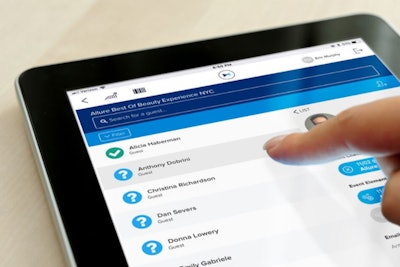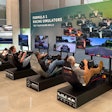Technology undoubtedly affects how we experience our world. The immediacy of information has ultimately reshaped expectations and behaviors. A quick Yelp search helps us determine if a restaurant is worth the wait; a push notification informs us of danger down the street; an SMS from the pharmacy reminds us to refill our prescriptions. The convenience of information and support is now the norm, and it's no surprise that this affects expectations around customer service. But how should professionals in hospitality deal with this? How can we offer convenient and full-service customer care that is technology forward, but human-centric? There is a beautiful complexity around the impact of real human presence and interaction, and we should always start there when thinking about how to implement technology without removing that essential personal connection with our guests.
Sadly, many corporations lose sight of the importance of human empathy and end up integrating technology into their business to create efficiencies without thinking about the effect it can have on the customer's experience. Eatsa, a quinoa bowl Automat chain, represents an off-balanced integration of technology. The chain offers quick, customizable grain bowls without subjecting customers to any real human interaction. Choose from a selection of bowls and salads, wait a few minutes, and your personalized meal will appear in a cubby. It's a pretty neat idea, if you don't fully understand the nature of restaurants and food hospitality, which, put simply, is a celebration of culture, creativity, and most importantly, of community. Eatsa, claiming to have expanded too quickly, closed five of its seven stores in 2017. The brand ultimately lost sight of technology's ability to complement human interaction and experience. In so doing, the most important aspect of the business was diluted: the food.
Fortunately, there are many ways to successfully implement technology into customer service. Neiman Marcus, for example, adopts “memory mirror” technology to simplify the in-person shopping experience. According to "Tech Tackles the Fitting Room," an article published by Poornima Apte for Racked, people are unlikely to enter a dressing room more than once—if the clothes don't immediately suit the shopper, they're more likely to give up than they are to ask an associate for assistance. To combat this frustration, Nieman Marcus integrates RFID technology into the merchandise. When a guest enters a fitting room, a digital mirror reads the RFID codes and offers additional colors, sizes, and styles from which to choose. If an extra size is needed, the sales associate receives an alert and quickly presents the clients with the requested items while also offering their thoughts and professional expertise. This case is an excellent example of technology complementing the unique service that humans can offer.
At Concierge.com, we live by our mantra: "Our software makes it possible. Our people make it personal." For events, we build technology to create efficiencies, manage endless details, and communicate customized and personalized information at the right time. But it's the people that make a guest feel welcome, and that will never change.



















